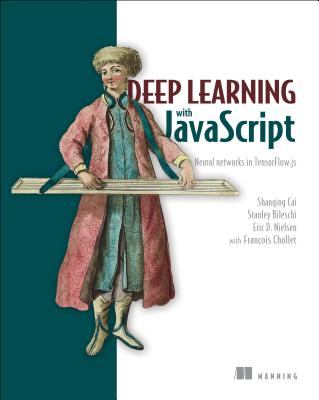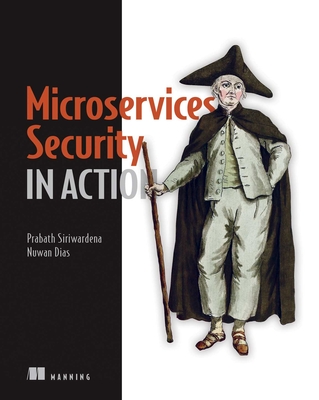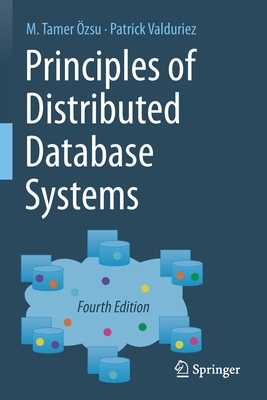Communicating and Mobile Systems: the Pi-Calculus (Paperback)
暫譯: 通訊與行動系統:π-演算 (平裝本)
Robin Milner
- 出版商: Cambridge
- 出版日期: 1999-05-20
- 售價: $790
- 貴賓價: 9.8 折 $774
- 語言: 英文
- 頁數: 176
- 裝訂: Paperback
- ISBN: 0521658691
- ISBN-13: 9780521658690
-
相關分類:
微積分 Calculus
已絕版
買這商品的人也買了...
-
 Arduino 官方正版 Genuino 101
Arduino 官方正版 Genuino 101$1,700$1,700 -
 Raspberry Pi 3 Model B+ (UK製)
Raspberry Pi 3 Model B+ (UK製)$4,620$4,389 -
 JVM Performance Engineering: Inside OpenJDK and the HotSpot Java Virtual Machine (Paperback)
JVM Performance Engineering: Inside OpenJDK and the HotSpot Java Virtual Machine (Paperback)$1,980$1,881 -
 晉昇軟體最高殿堂:Jenkins2 持續整合大師之路
晉昇軟體最高殿堂:Jenkins2 持續整合大師之路$600$474 -
 $1,320Deep Learning with JavaScript: Neural Networks in Tensorflow.Js
$1,320Deep Learning with JavaScript: Neural Networks in Tensorflow.Js -
 JavaScript 技術手冊
JavaScript 技術手冊$560$442 -
 Building a Future-Proof Cloud Infrastructure: A Unified Architecture for Network, Security and Storage Services (Paperback)
Building a Future-Proof Cloud Infrastructure: A Unified Architecture for Network, Security and Storage Services (Paperback)$1,998$1,898 -
 $1,584Microservices Security in Action
$1,584Microservices Security in Action -
 Principles of Distributed Database Systems, 4/e (Paperback)
Principles of Distributed Database Systems, 4/e (Paperback)$2,790$2,651 -
 $2,280Parallel and High Performance Computing (Paperback)
$2,280Parallel and High Performance Computing (Paperback) -
 $2,070Multithreaded JavaScript: Concurrency Beyond the Event Loop
$2,070Multithreaded JavaScript: Concurrency Beyond the Event Loop -
 Structure and Interpretation of Computer Programs: JavaScript Edition (Paperback)
Structure and Interpretation of Computer Programs: JavaScript Edition (Paperback)$2,680$2,546 -
 Understanding Distributed Systems : What every developer should know about large distributed applications, 2/e (Paperback)
Understanding Distributed Systems : What every developer should know about large distributed applications, 2/e (Paperback)$1,650$1,568 -
 建構機器學習管道|運用 TensorFlow 實現模型生命週期自動化 (Building Machine Learning Pipelines: Automating Model Life Cycles with Tensorflow)
建構機器學習管道|運用 TensorFlow 實現模型生命週期自動化 (Building Machine Learning Pipelines: Automating Model Life Cycles with Tensorflow)$580$458 -
 $2,052Mastering API Architecture: Design, Operate, and Evolve Api-Based Systems (Paperback)
$2,052Mastering API Architecture: Design, Operate, and Evolve Api-Based Systems (Paperback) -
 $2,233Functional and Concurrent Programming: Core Concepts and Features
$2,233Functional and Concurrent Programming: Core Concepts and Features -
 $1,767Functional Design: Principles, Patterns, and Practices (Paperback)
$1,767Functional Design: Principles, Patterns, and Practices (Paperback) -
 OpenTelemetry 入門指南:建立全面可觀測性架構(iThome鐵人賽系列書)【軟精裝】
OpenTelemetry 入門指南:建立全面可觀測性架構(iThome鐵人賽系列書)【軟精裝】$750$585 -
 $1,995Learning Systems Thinking: Essential Nonlinear Skills and Practices for Software Professionals (Paperback)
$1,995Learning Systems Thinking: Essential Nonlinear Skills and Practices for Software Professionals (Paperback) -
 $1,663Collaborative Software Design: How to Facilitate Domain Modeling Decisions
$1,663Collaborative Software Design: How to Facilitate Domain Modeling Decisions -
 內行人才知道的機器學習系統設計面試指南 (Machine Learning System Design Interview)
內行人才知道的機器學習系統設計面試指南 (Machine Learning System Design Interview)$680$537 -
 $1,995Mastering Opentelemetry and Observability: Enhancing Application and Infrastructure Performance and Avoiding Outages
$1,995Mastering Opentelemetry and Observability: Enhancing Application and Infrastructure Performance and Avoiding Outages -
 $2,062Full Stack JavaScript Strategies: The Hidden Parts Every Mid-Level Developer Needs to Know (Paperback)
$2,062Full Stack JavaScript Strategies: The Hidden Parts Every Mid-Level Developer Needs to Know (Paperback) -
 $2,205Beyond Vibe Coding: From Coder to Ai-Era Developer (Paperback)
$2,205Beyond Vibe Coding: From Coder to Ai-Era Developer (Paperback) -
 $2,328Building Event-Driven Microservices: Leveraging Organizational Data at Scale
$2,328Building Event-Driven Microservices: Leveraging Organizational Data at Scale
相關主題
商品描述
Description:
Communication is a fundamental and integral part of computing, whether between different computers on a network, or between components within a single computer. In this book Robin Milner introduces a new way of modelling communication that reflects its position. He treats computers and their programs as themselves built from communicating parts, rather than adding communication as an extra level of activity. Everything is introduced by means of examples, such as mobile phones, job schedualers, vending machines, data structures, and the objects of object-oriented programming. But the aim of the book is to develop a theory, the pi-calculus, in which these things can be treated rigorously. The pi-calculus differs from other models of communicating behaviour mainly in its treatment of mobility. The movement of a piece of data inside a computer program is treated exactly the same as the transfer of a message--or indeed an entire computer program--across the internet. One can also describe networks which reconfigure themselves. The calculus is very simple but powerful; its most prominent ingredient is the notion of a name. Its theory has two important ingredients: the concept of behavioural (or observational) equivalence, and the use of a new theory of types to classify patterns of interactive behaviour. The internet, and its communication protocols, fall within the scope of the theory just as much as computer programs, data structures, algorithms and programming languages. This book is the first textbook on the subject; it has been long-awaited by professionals and will be welcome by them, and their students.
Table of Contents:
Glossary
Part I. Communicating Systems: 1. Introduction
2. Behaviour of
automata
3. Sequential processes and bisimulation
4. Concurrent processes
and reaction
5. Transitions and strong equivalence
6. Observation
equivalence: theory
7. Observation equivalence: examples
Part II. The
?Calculus: 8. What is mobility? 9. The ?calculus and reaction
10.
Applications of the ?calculus
11. Sorts, objects and functions
12.
Commitments and strong bisimulation
13. Observation equivalence and
examples
14. Discussion and related
work
Bibliography
Index.
商品描述(中文翻譯)
**描述:**
通訊是計算的基本且不可或缺的一部分,無論是在網路上不同電腦之間,還是在單一電腦內部的組件之間。在這本書中,Robin Milner 介紹了一種新的通訊建模方式,反映了其位置。他將電腦及其程式視為由通訊部分組成的整體,而不是將通訊視為額外的活動層級。所有內容都是通過範例引入的,例如行動電話、工作排程器、自動販賣機、資料結構以及物件導向程式設計中的物件。但這本書的目的是發展一種理論,即 pi-calculus,在這種理論中可以嚴謹地處理這些事物。pi-calculus 與其他通訊行為模型的主要區別在於其對流動性的處理。資料在電腦程式內部的移動與訊息的傳遞——或實際上整個電腦程式——在互聯網上的傳輸被視為完全相同。還可以描述自我重新配置的網路。這個演算非常簡單但功能強大;其最顯著的成分是名稱的概念。其理論有兩個重要成分:行為(或觀察)等價的概念,以及使用一種新的類型理論來分類互動行為的模式。互聯網及其通訊協議與電腦程式、資料結構、演算法和程式語言同樣在理論的範疇內。這本書是該主題的第一本教科書;專業人士期待已久,並將受到他們及其學生的歡迎。
**目錄:**
詞彙表
第一部分:通訊系統:1. 介紹
2. 自動機的行為
3. 順序過程與雙模擬
4. 並行過程與反應
5. 轉換與強等價
6. 觀察等價:理論
7. 觀察等價:範例
第二部分:?演算:8. 什麼是流動性?
9. ?演算與反應
10. ?演算的應用
11. 類型、物件與函數
12. 承諾與強雙模擬
13. 觀察等價與範例
14. 討論與相關工作
參考文獻
索引。











